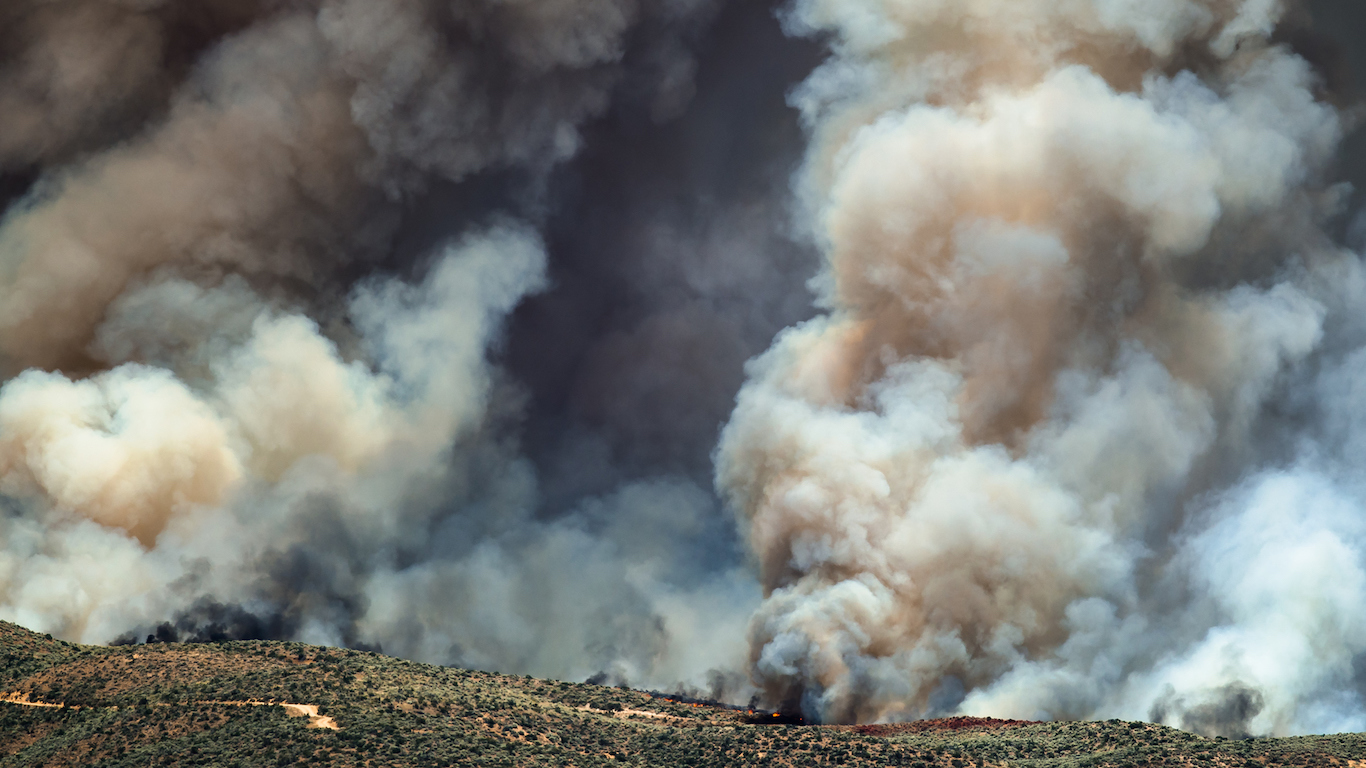
The widely known and respected World Air Quality Index project tracks air pollution in thousands of locations around the world. The worst places almost always include parts of India, China, Pakistan and Bangladesh, where the air is fouled by factories and household use of polluting substances for warmth and cooking. Today, the worst air quality is not in any of those nations. It is in the parts of western U.S. states where wildfires are raging.
[in-text-ad]
The World Air Quality Index uses data including “measurement of particulate matter (PM2.5 and PM10), Ozone (O3), Nitrogen Dioxide (NO2), Sulfur Dioxide (SO2) and Carbon Monoxide (CO) emissions.” Most real-time data measures PM2.5 and PM10 information. It identifies good air quality as posing no danger to humans.
On its index, good air quality gets a score of 0 to 50. At an index between 51 and 100, the air is labeled as “moderate.” For most people, this level is acceptable. For people with lung problems, it poses a small threat. At 101 to 150 on the scale, air quality is unhealthy for people with asthma or lung issues. “Unhealthy air,” at 151 to 200 on the scale, means everyone in the population faces some health risk. At 201 to 300, the air is “very unhealthy.” These locations often post warnings that air pollution could affect the health of everyone. Finally, at the worst end of the scale, air pollution is “hazardous” and indexes above 301. The entire population in these areas faces acute health danger.
Hazardous air quality is rare. Warnings at this level are occasionally posted in India and China’s largest cities. The air quality is almost never at this level in the western hemisphere.
Currently, the air quality index is 578 in Mariposa, California, west of San Jose, where wildfires are burning thousands of acres. In Silverton, Oregon, the number is 588. In Mendocino, west of Sacramento, the index stands at 549. These air pollution threats are not only very local. The smoke from the fires has spread many miles away. The sky over San Francisco is orange. In most areas in and around the city, the air quality index is over 150.
The wildfires pose an immediate risk to property and the lives of people in their paths. Beyond that, the measurement of air quality shows that the hazards to health also exist many miles away and will not abate until the fires do. The fires may not be put out entirely for weeks. In terms of air quality, these places are worse off than cities in India and China are when their air pollution is at its peak.
It’s Your Money, Your Future—Own It (sponsor)
Retirement can be daunting, but it doesn’t need to be.
Imagine having an expert in your corner to help you with your financial goals. Someone to help you determine if you’re ahead, behind, or right on track. With SmartAsset, that’s not just a dream—it’s reality. This free tool connects you with pre-screened financial advisors who work in your best interests. It’s quick, it’s easy, so take the leap today and start planning smarter!
Don’t waste another minute; get started right here and help your retirement dreams become a retirement reality.
Thank you for reading! Have some feedback for us?
Contact the 24/7 Wall St. editorial team.


